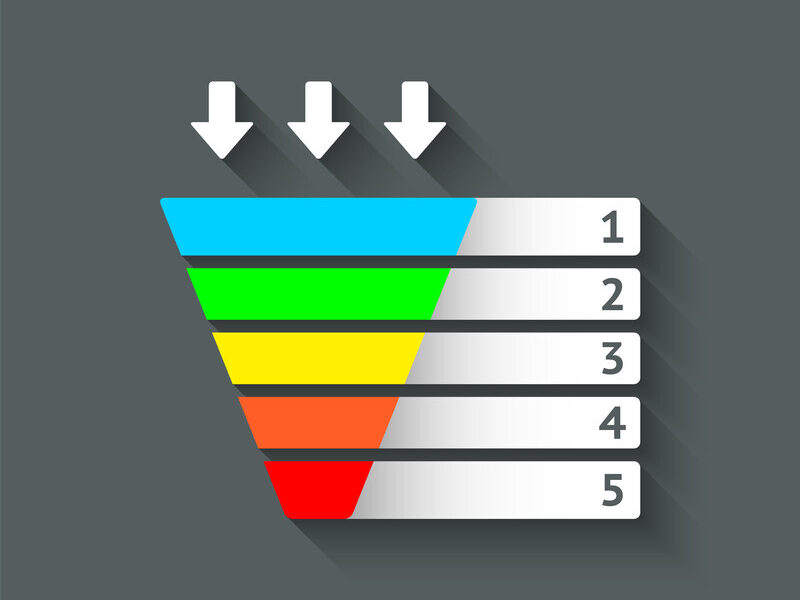Sales Funnels Are Increasing in Popularity
Sales funnels are becoming an increasingly popular technique for businesses to generate leads, nurture prospects, and ultimately convert them into paying customers. With the advent of digital marketing, the concept of sales funnels has expanded beyond traditional sales processes to include online strategies for attracting and retaining customers.
But do sales funnels work? In this quick guide, we will explore the ins and outs of sales funnels, discuss their effectiveness, and provide insights on how to create a successful sales funnel for your business.
Do Sales Funnels Work? The Evidence
Before we can confidently answer the question, let’s explore some real-life examples and statistics that demonstrate the effectiveness of sales funnels in various industries.
Sales Funnels in E-Commerce: Upselling Gets Better Results
One of the key strategies businesses employ within their sales funnels is upselling, which involves offering customers a higher-end product or service than the one they initially showed interest in. Shopify reports that behavioral analysis company PredictiveIntent found upselling to be 20 times more effective than cross-selling (offering complementary products) in e-commerce settings.
The Rise of Marketing Automation and Sales Funnels
Marketing automation, which includes the use of sales funnels, has seen a significant surge in popularity over recent years. EmailMonday reports that the Marketing Automation Software industry is projected to be worth $10.4 billion by 2025, with a 12.7% annual growth rate.
Moreover, 75% of marketers now use some form of marketing automation tool, according to Social Media Today. This widespread adoption of sales funnels and marketing automation tools highlights their effectiveness in driving business growth.
Real-Life Examples of Successful Sales Funnels
There are countless examples of businesses that have successfully implemented sales funnels to generate leads, increase conversions, and grow their revenue. Here are a few notable examples:
- Double Your Freelancing created a sophisticated, multi-tiered sales funnel that helped generate 7-figure revenue.
- A Sweet Pea Chef revamped their sales funnel and saw a 412% increase in sales for their art business.
These examples demonstrate that sales funnels, when designed and implemented correctly, can be highly effective tools for businesses across various industries.
How to Build a Sales Funnel from Scratch
Now that we have established that sales funnels do work, let’s explore the steps to create a successful sales funnel for your business:
Step 1: Find your Audience
The first step in creating a sales funnel is to define your target audience. You need to have a clear understanding of who your ideal customers are, their needs, preferences, and pain points. This information will help you create relevant and targeted marketing messages that resonate with your audience.
Step 2: Develop a Compelling Offer
A successful sales funnel starts with a compelling offer that attracts potential customers. This can be a free resource (such as an eBook or webinar), a discount, or a limited-time promotion. The goal is to create an offer that is valuable and relevant to your target audience, encouraging them to engage with your business.
Step 3: Create Engaging Content
Content plays a crucial role in your sales funnel, as it helps educate, inform, and nurture your prospects throughout their journey. Develop high-quality, engaging content that addresses the needs and concerns of your target audience. This may include blog posts, videos, social media posts, or email newsletters.
Step 4: Implement Marketing Automation
Marketing automation tools can help you streamline and automate your sales funnel, making it more efficient and effective. These tools can help you segment your audience, personalize your marketing messages, and track the performance of your sales funnel. Some popular marketing automation platforms include HubSpot, Marketo, and Pardot.
Step 5: Optimize Your Sales Funnel
Once your sales funnel is up and running, it’s essential to continuously monitor and optimize its performance. Analyze data and metrics to identify areas for improvement and make necessary adjustments. This may involve testing different offers, content, or marketing channels to find the most effective strategies for your business.
Conclusion
In conclusion, sales funnels do work when designed and implemented effectively. They can help businesses generate leads, nurture prospects, and drive conversions. By understanding what a sales funnel is and how it works, and following the steps outlined in this guide, you can create a solid sales funnel for your business.
Remember, a well-designed sales funnel can put your sales process on autopilot, allowing you to focus on other aspects of your business while generating leads and sales. So, if you haven’t already, it’s time to start exploring the world of sales funnels and harness their potential for your business’s success.





